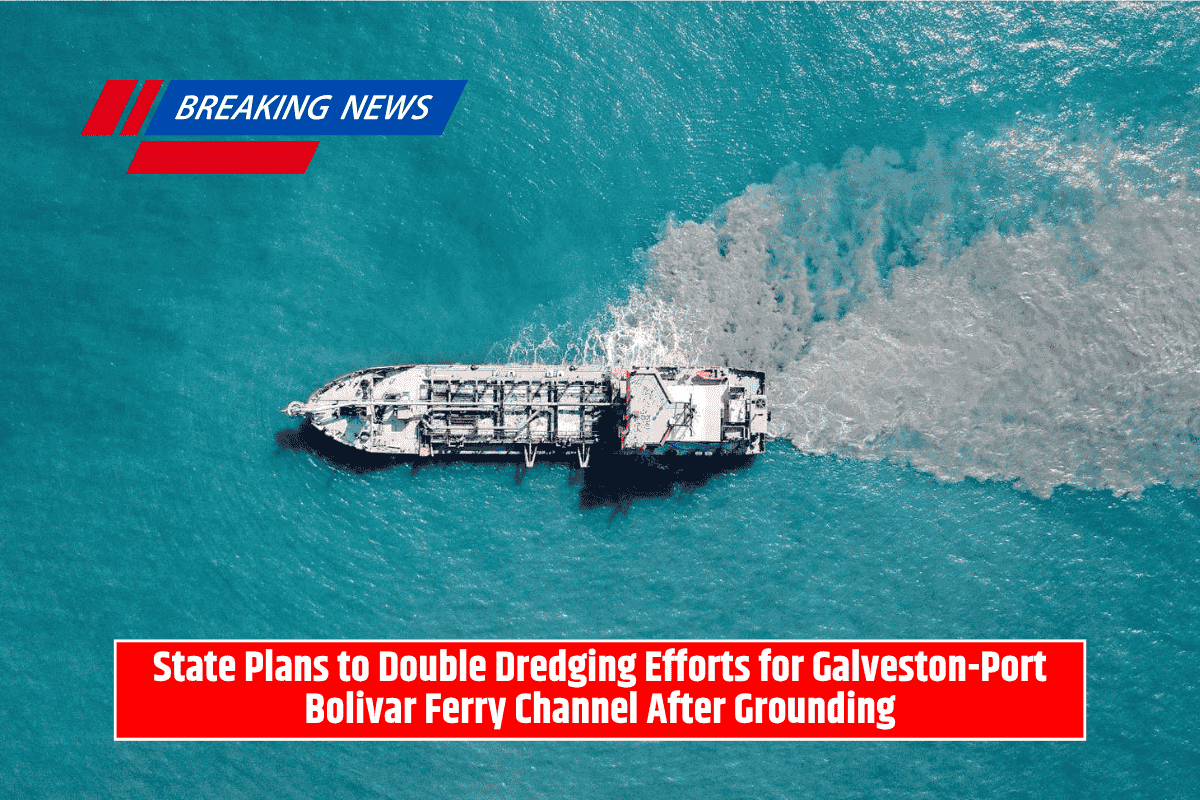The Texas Department of Transportation (TxDOT) is set to double its dredging efforts in the channel between the Galveston Port and Bolivar Ferry landings after the ferry Robert Lanier ran aground on a sandbar in May. The department aims to prevent similar incidents in the future by increasing its dredging activities.
Ferry Grounding Incident
On May 25, the Robert Lanier ferry, which was traveling from Bolivar Peninsula to Galveston, became stuck on silt at the bottom of the channel.
The ferry remained grounded for approximately three hours before being freed by a tugboat. Despite the temporary setback, the ferry was able to continue its journey to Galveston without any damage.
Increased Dredging Efforts
Following the incident, ferry captains were instructed to avoid the area where the grounding occurred and to use sonar technology to detect silt buildup until the annual dredging was completed.
However, Danny Perez, public information officer for TxDOT’s Houston district, explained that the department is now exploring the option of conducting a second round of dredging annually to prevent similar issues in the future.
“Rather than just relying on the one-time dredging, we’re looking at opportunities to have a second dredging to prevent any situations like we had in May,” Perez said.
Importance of the Galveston-Bolivar Ferry
The Galveston-Bolivar Ferry plays a vital role in the daily lives of both Bolivar Peninsula and Galveston residents. The ferry serves about 6 million passengers each year and is crucial for hurricane evacuations, as well as providing quick access to emergency medical services for Bolivar residents.
It also supports tourism, which is a key driver of the local economy for both areas.
Annual Dredging and Challenges
The U.S. Army Corps of Engineers is responsible for dredging the channel annually to maintain a safe depth for ferry operations. In the 2023 dredging, the Corps removed about 100,000 cubic yards of silt, which was necessary to restore the channel’s depth.
The channel needs to be maintained at more than 12 feet deep for safe ferry navigation. Before this year’s dredging, some parts of the channel were only 10 feet deep, making navigation hazardous for the ferry.
Without proper dredging, the channel could close, and the ferry could face difficulties, which would increase maintenance costs and disrupt services, according to the U.S. Army Corps of Engineers.
Future Dredging Plans
The Texas Department of Transportation’s plan to increase dredging efforts depends on finding a location to dispose of the dredged silt.
Potential plans include using the silt to replenish eroded beaches, which would require collaboration with the Texas General Land Office, environmental groups, and the Army Corps of Engineers to find a suitable location.
If everything goes according to plan, the Corps would conduct another round of dredging in the fall. This would be the second dredging effort for the year, doubling the frequency of dredging.
Impact of Climate Change
Perez noted that although the department has not experienced any other grounding incidents in the past, the situation could become more frequent due to climate change. The number of severe weather events in the Gulf has increased, and this has led to quicker silt buildup in the channel.
Hurricane Beryl was cited as one of the main contributors to the silt buildup that caused the May grounding incident.
With the increase in extreme weather events and silt accumulation, the Texas Department of Transportation is contemplating a larger annual dredging effort. “We feel like it’s a necessity to double the efforts to do this two times a year,” Perez concluded.
